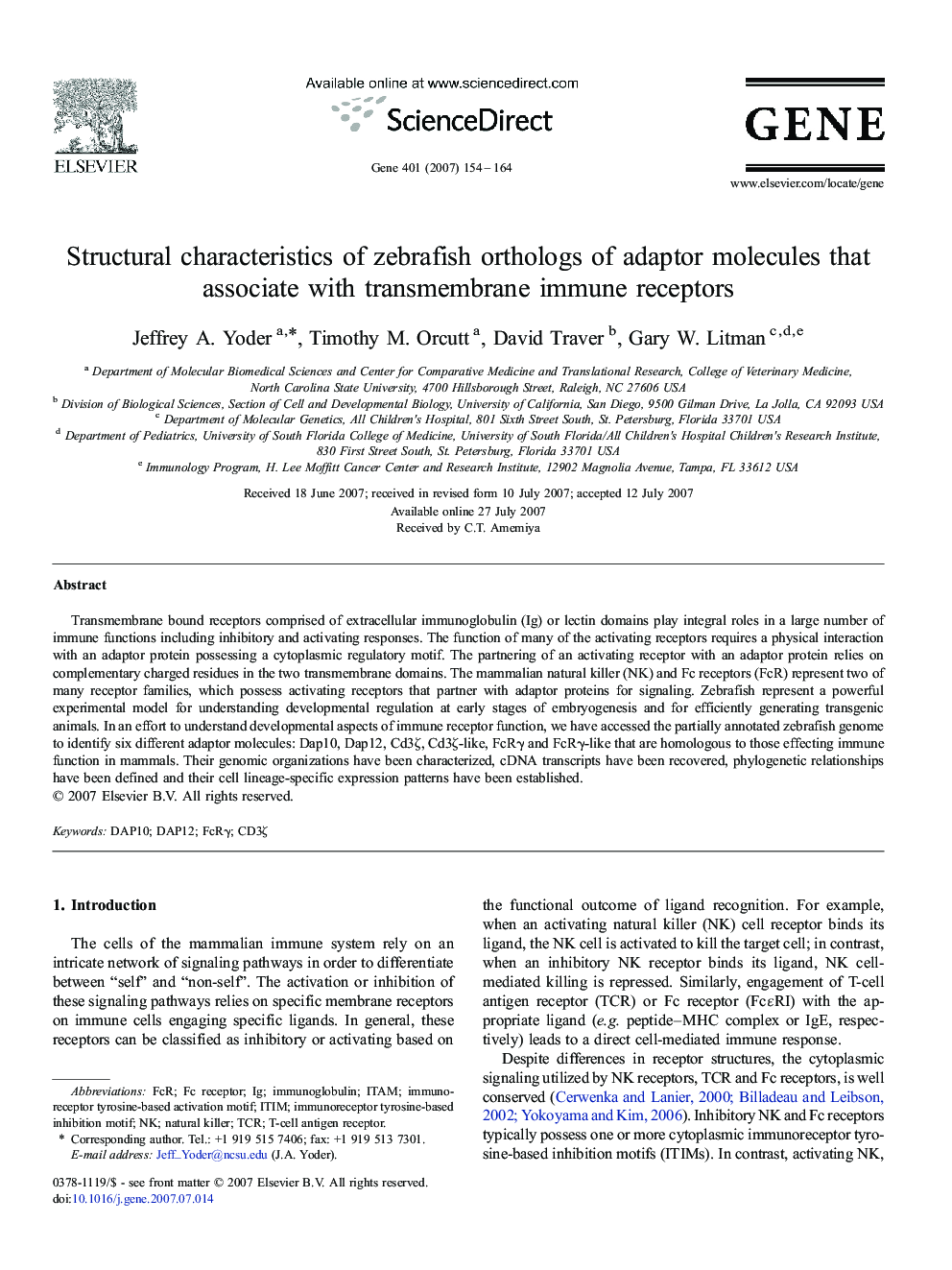| Article ID | Journal | Published Year | Pages | File Type |
|---|---|---|---|---|
| 2819560 | Gene | 2007 | 11 Pages |
Transmembrane bound receptors comprised of extracellular immunoglobulin (Ig) or lectin domains play integral roles in a large number of immune functions including inhibitory and activating responses. The function of many of the activating receptors requires a physical interaction with an adaptor protein possessing a cytoplasmic regulatory motif. The partnering of an activating receptor with an adaptor protein relies on complementary charged residues in the two transmembrane domains. The mammalian natural killer (NK) and Fc receptors (FcR) represent two of many receptor families, which possess activating receptors that partner with adaptor proteins for signaling. Zebrafish represent a powerful experimental model for understanding developmental regulation at early stages of embryogenesis and for efficiently generating transgenic animals. In an effort to understand developmental aspects of immune receptor function, we have accessed the partially annotated zebrafish genome to identify six different adaptor molecules: Dap10, Dap12, Cd3ζ, Cd3ζ-like, FcRγ and FcRγ-like that are homologous to those effecting immune function in mammals. Their genomic organizations have been characterized, cDNA transcripts have been recovered, phylogenetic relationships have been defined and their cell lineage-specific expression patterns have been established.
